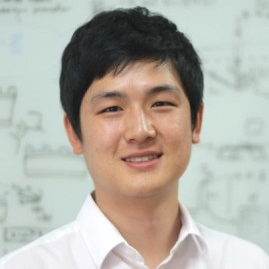Combinatorial Investigations of Alloys
A special issue of Metals (ISSN 2075-4701). This special issue belongs to the section "Structural Integrity of Metals".
Deadline for manuscript submissions: closed (1 March 2022) | Viewed by 10427
Special Issue Editor
Special Issue Information
Dear Colleagues,
Unveiling the relationships among the composition, microstructure, processing, and properties of alloys is crucial not only to achieve a fundamental understanding of existing material systems but also for the discovery of novel alloys with unprecedented properties. Combinatorial materials science is an emerging field and has facilitated the composition–microstructure–processing-property mapping of various alloys. Furthermore, with the help of the modern progress of the accelerated measurement schemes, it is now possible to efficiently acquire mechanical, thermal, electrical, and physical/chemical properties of a broad range of alloys.
Many of the advanced alloys, such as metallic glasses, high-entropy alloys, superalloys, self-healing alloys, and shape memory alloys, consist of multiple constituent elements. As the unexplored composition and microstructural regions of the multicomponent alloys are immense, the use of the combinatorial and high-throughput approach would allow the rapid development of novel alloys. In this Special Issue, original research articles or critical review articles on the following topics shall be published:
Combinatorial experimental or computational studies of alloys;
Novel experimental techniques for rapid characterizations of advanced alloys;
Investigation of advanced alloys under various processing and environmental conditions.
I am glad to invite you to submit your work to the Special Issue, “Combinatorial Investigations of Alloys”.
Prof. Dongwoo Lee
Guest Editor
Manuscript Submission Information
Manuscripts should be submitted online at www.mdpi.com by registering and logging in to this website. Once you are registered, click here to go to the submission form. Manuscripts can be submitted until the deadline. All submissions that pass pre-check are peer-reviewed. Accepted papers will be published continuously in the journal (as soon as accepted) and will be listed together on the special issue website. Research articles, review articles as well as short communications are invited. For planned papers, a title and short abstract (about 100 words) can be sent to the Editorial Office for announcement on this website.
Submitted manuscripts should not have been published previously, nor be under consideration for publication elsewhere (except conference proceedings papers). All manuscripts are thoroughly refereed through a single-blind peer-review process. A guide for authors and other relevant information for submission of manuscripts is available on the Instructions for Authors page. Metals is an international peer-reviewed open access monthly journal published by MDPI.
Please visit the Instructions for Authors page before submitting a manuscript. The Article Processing Charge (APC) for publication in this open access journal is 2600 CHF (Swiss Francs). Submitted papers should be well formatted and use good English. Authors may use MDPI's English editing service prior to publication or during author revisions.
Keywords
- combinatorial materials science
- high-throughput experiments
- multicomponent alloys
- properties
- thin films
Benefits of Publishing in a Special Issue
- Ease of navigation: Grouping papers by topic helps scholars navigate broad scope journals more efficiently.
- Greater discoverability: Special Issues support the reach and impact of scientific research. Articles in Special Issues are more discoverable and cited more frequently.
- Expansion of research network: Special Issues facilitate connections among authors, fostering scientific collaborations.
- External promotion: Articles in Special Issues are often promoted through the journal's social media, increasing their visibility.
- Reprint: MDPI Books provides the opportunity to republish successful Special Issues in book format, both online and in print.
Further information on MDPI's Special Issue policies can be found here.





